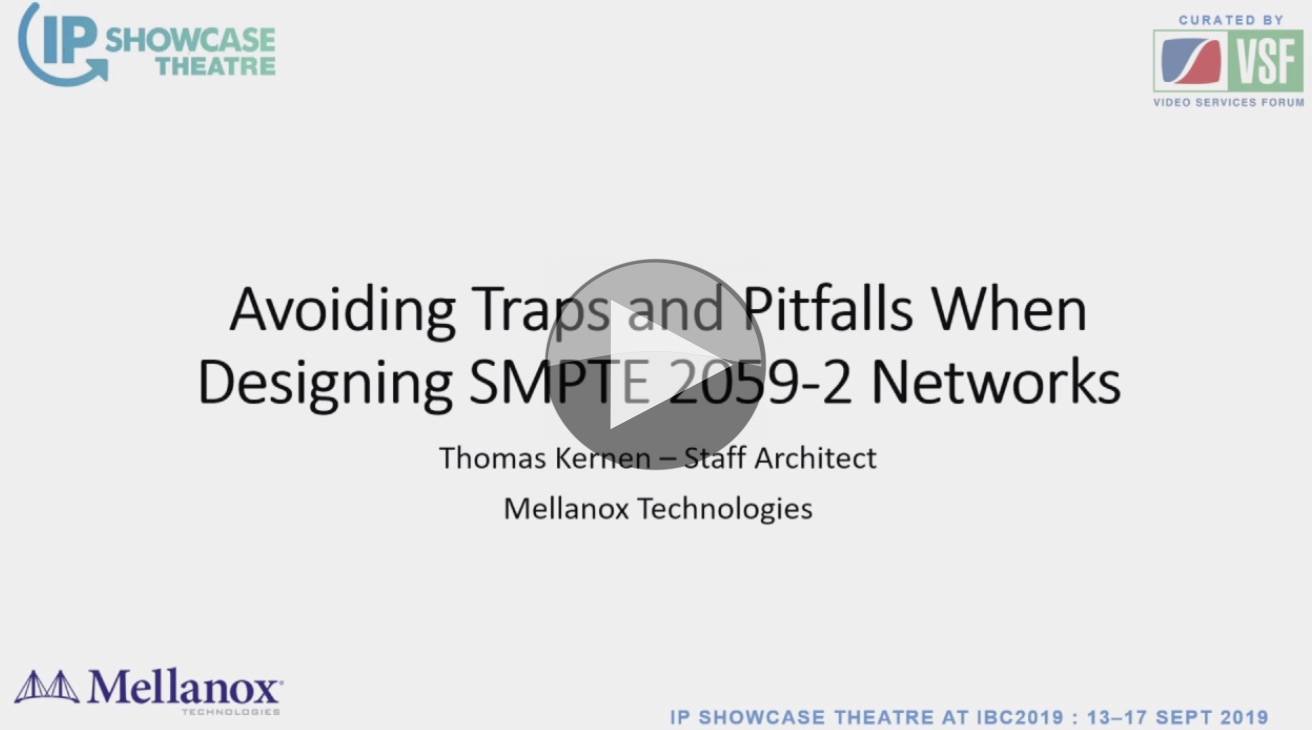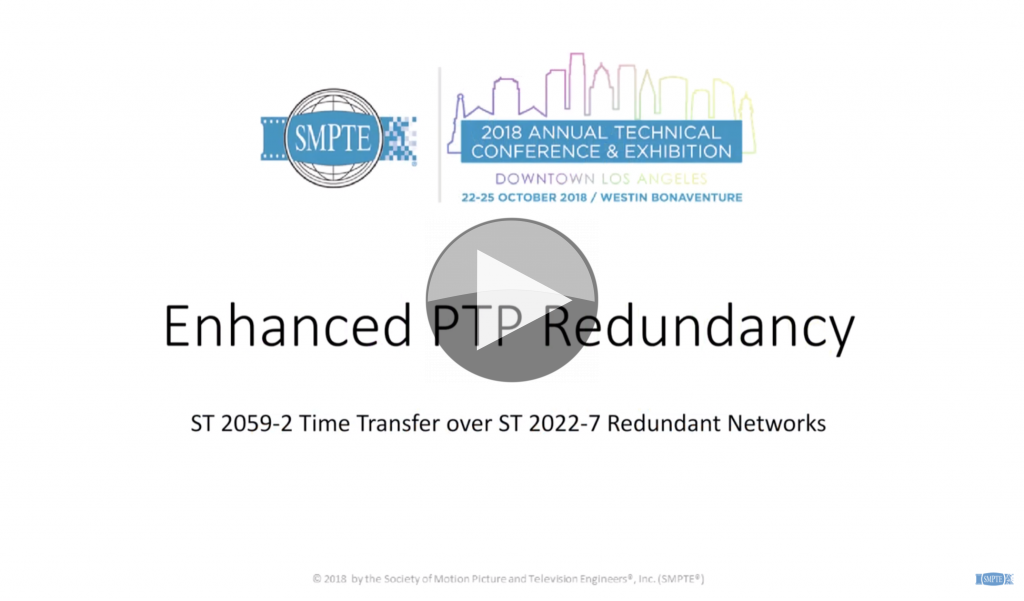As the industry gains more and more experience in implementing PTP, AKA SMPTE 2059-2, timing systems it’s natural to share the experiences so we can all find the best way to get the job done.
Thomas Kernen is a staff architect at Mellanox with plenty of experience under his belt regarding PTP so he’s come to the IP Showcase at IBC 2019 to explain.
The talk starts by discussing what good timing actually is and acknowledging everyone’s enthusiasm going into a project for a well designed, fully functioning system. But, importantly, Thomas then looks at a number of real-world restrictions that come into projects which compromise our ability to deliver a perfect system.
Next Thomas looks at aspects of a timing strategy to be careful of. The timing strategy outlines how the timing of your system is going to work, whether that is message rates or managing hierarchy amongst many other possibilities.
The network design itself, of course, has an important impact on your system. This starts at the basics of whether you build a network which is, itself, PTP aware. In general, Thomas says, it should be PTP aware. However, for smaller networks, it may be practical to use without.
Security gets examined next, talking about using encrypted transports, access control lists, ensuring protect interfaces etc. with the aim of preventing unintended access, removing the ability to access physically – much of this is standard IT security, but it’s so often ignored that it’s important to point it out.
PTP is a system, it’s not a signal like B&B so monitoring is important. How will you know the health of your PTP distribution? You need to monitor on the network side, from the point of view of the deices themselves but also analyse the timing signals themselves, for instance, by comparing the timing signals between the main and reserve.
Finally, Thomas warns about designing redundancy systems since “Redundancy in PTP doesn’t exist.” and then finishes with some notes on properly completing a PTP project.
Speaker
 |
Thomas Kernen Staff Architect, Mellanox Technologies |



